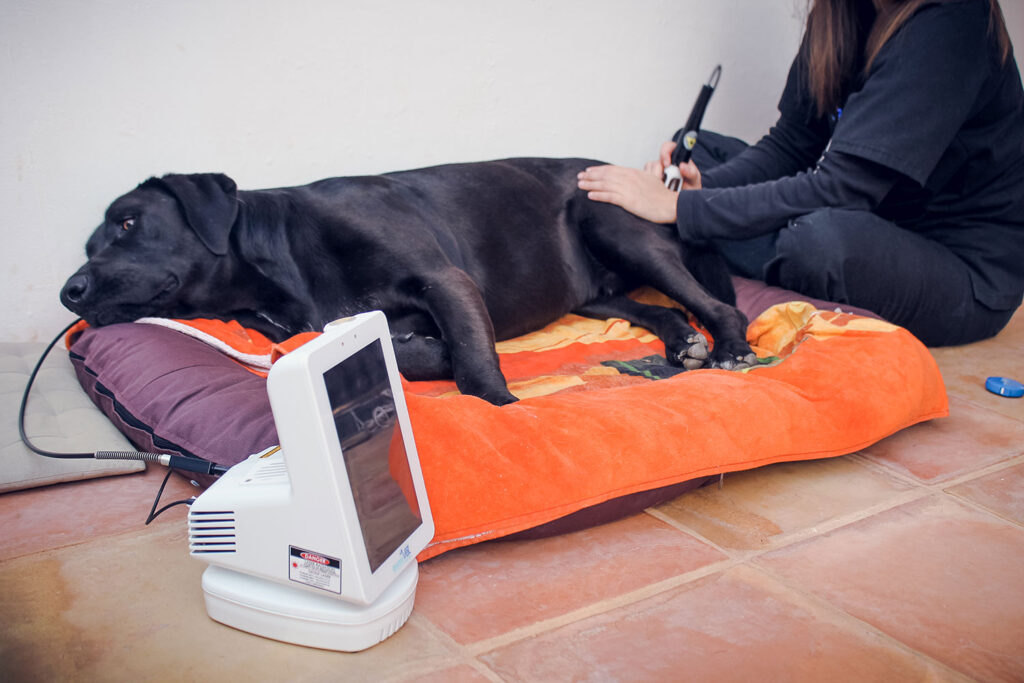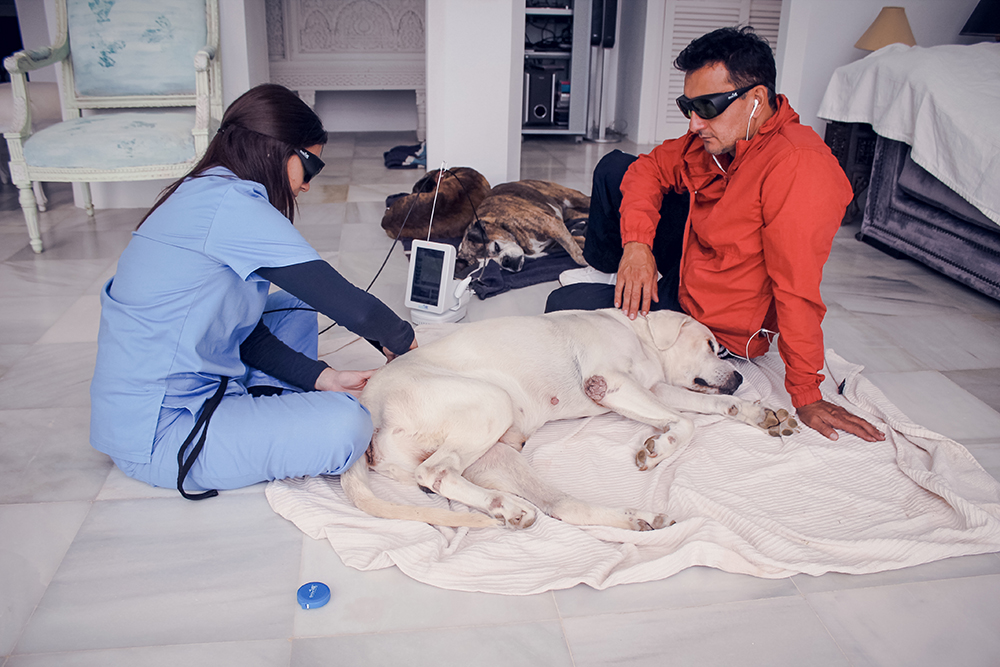Laser therapy has been given various names and has been known since 2015 as photobiomodulation due to its effects on the body1.
A monochromatic laser is usually used; i.e., one characterised by a single wavelength. Consistent, these waves are perfectly synchronised (coordination of the crests and troughs) to achieve superposition, meaning that the photons are in the same temporal and spatial phase. Collimated, concentrating all the energy onto a single point and in a single direction.
Wavelengths stem from the undulating nature of photon movement, with the energy being absorbed by the body. Laser therapy works within the wavelength range found between red and infra-red, characterised by having a NON-IONISING effect.
When this light – with the specific characteristics described above – is absorbed by the body, the effects of photobiomodulation are produced. Chromophores are responsible for energy absorption. The most important of these from a therapeutic perspective are melanin, cytochrome c oxidase and haemoglobin. Absorption by these chromophores takes place at 660nm, 808nm, 920nm, respectively.
The effects begin at the level of haemoglobin and cytochrome c oxidase. Haemoglobin is responsible for transporting oxygen from the lungs to the cell. Oxygen exchange then takes place once it reaches the cell, with the oxygen passing into the cell interior. An improvement in this exchange is achieved with laser therapy. This oxygen then passes into the interior of the mitochondria. The respiratory chain is found within the mitochondrial membrane, formed of four protein complexes, with the final enzyme being cytochrome c oxidase.

The oxygen passes through these enzymes, producing oxidation-reduction (redox) reactions, stimulating the ATP synthase and producing ATP. This ATP provides energy to the cells, regulating a large quantity of reactions, such as pumping Na+/K+ ATP-ase. It has been seen that this ATP cannot be produced in wounded cells. However, this ATP can indeed be produced when applying laser therapy.
As a result of these oxidation-reduction reactions, as well as ATP, a series of free radicals are produced known as reactive oxygen species (ROS)2. Under oxidative stress circumstances, chronic inflammatory processes and inadequate concentrations can cause cellular oxidation related to cytotoxicity. In physiological concentrations however, these ROS are related to the release of various growth factors associated with tissue repair because they promote cellular differentiation (such as neuronal, among others).

Seeing is believing!
Book a demo now to learn how DoctorVet works!
On the other hand, nitric oxide (NO) can be found in cytochrome c. When this is stimulated by the laser light, it becomes disassociated from the cytochrome c oxidase so that the oxygen can pass into the respiratory chain and produce the redox reactions. In turn, this NO stimulates microcirculation and causes vasodilation3.
All this leads to the general effects of analgesia, inflammatory control and the biostimulation of different tissues, among others.
Laser therapy photobiomodulation can be achieved using the DoctorVet protocols.

Via dell’Impresa, 1
36040 Brendola (VI)
VAT 02558810244
C.R. VI 240226
© Copyright 2016-2021 LAMBDA S.p.A. | Privacy Policy